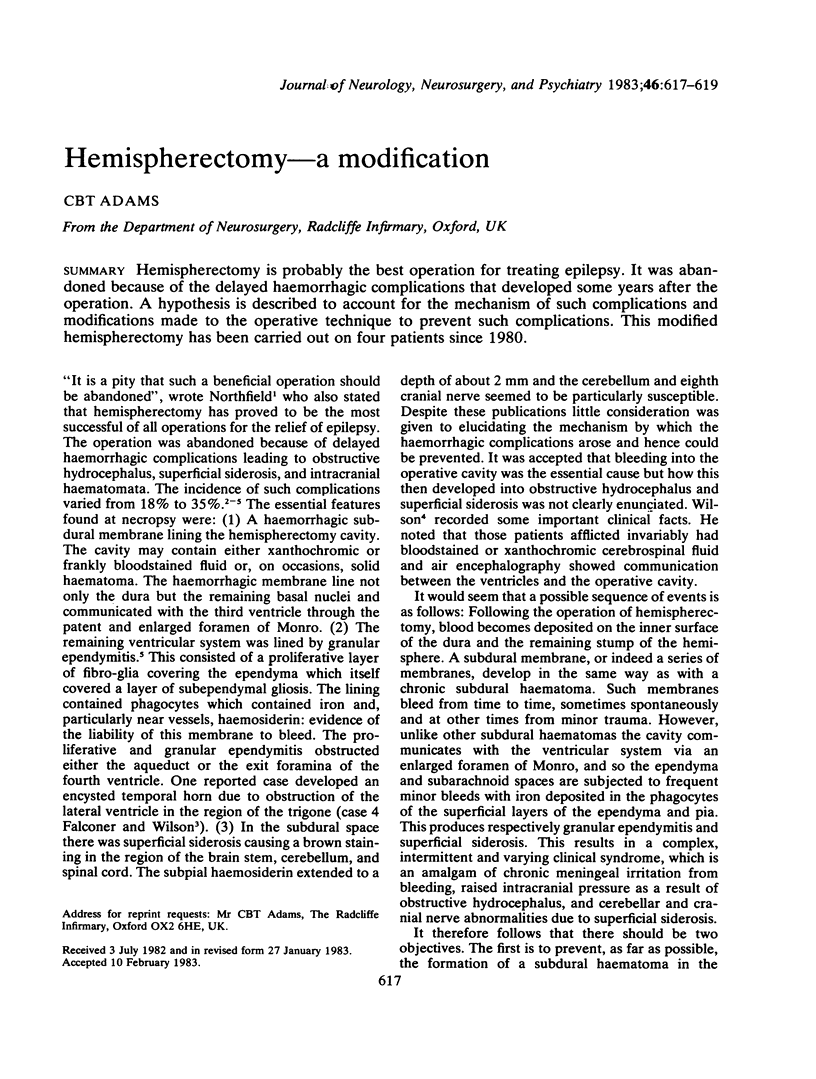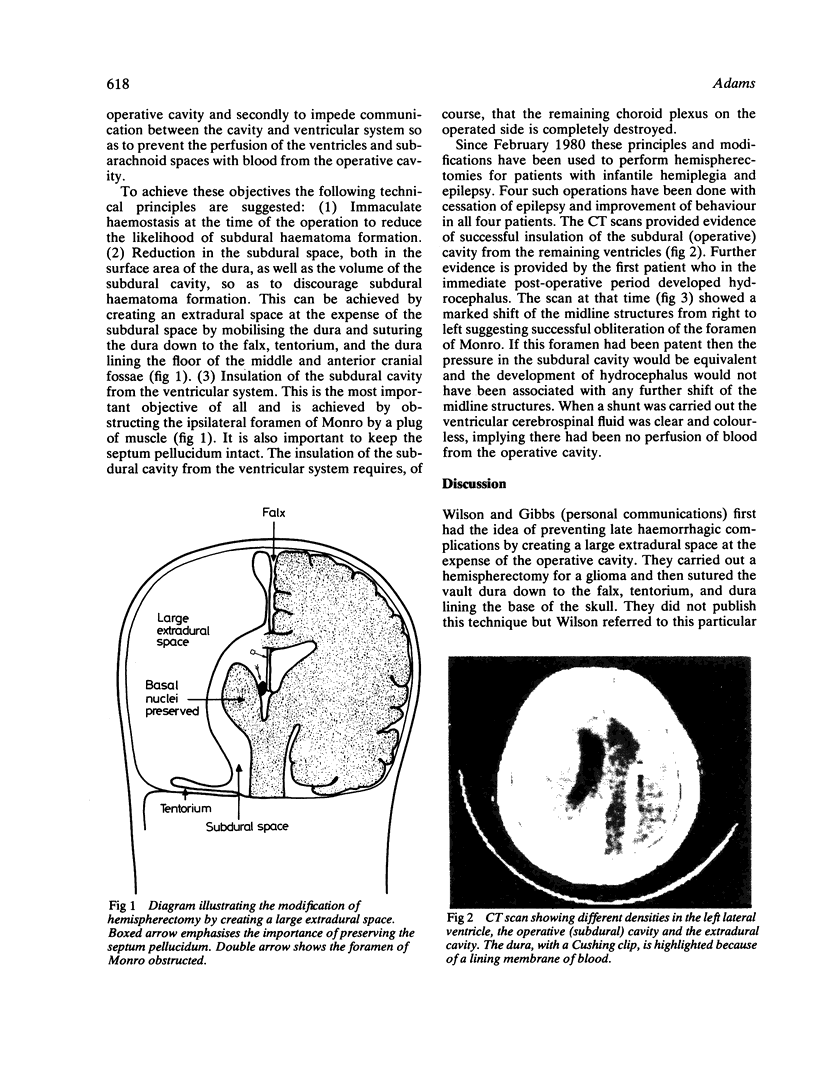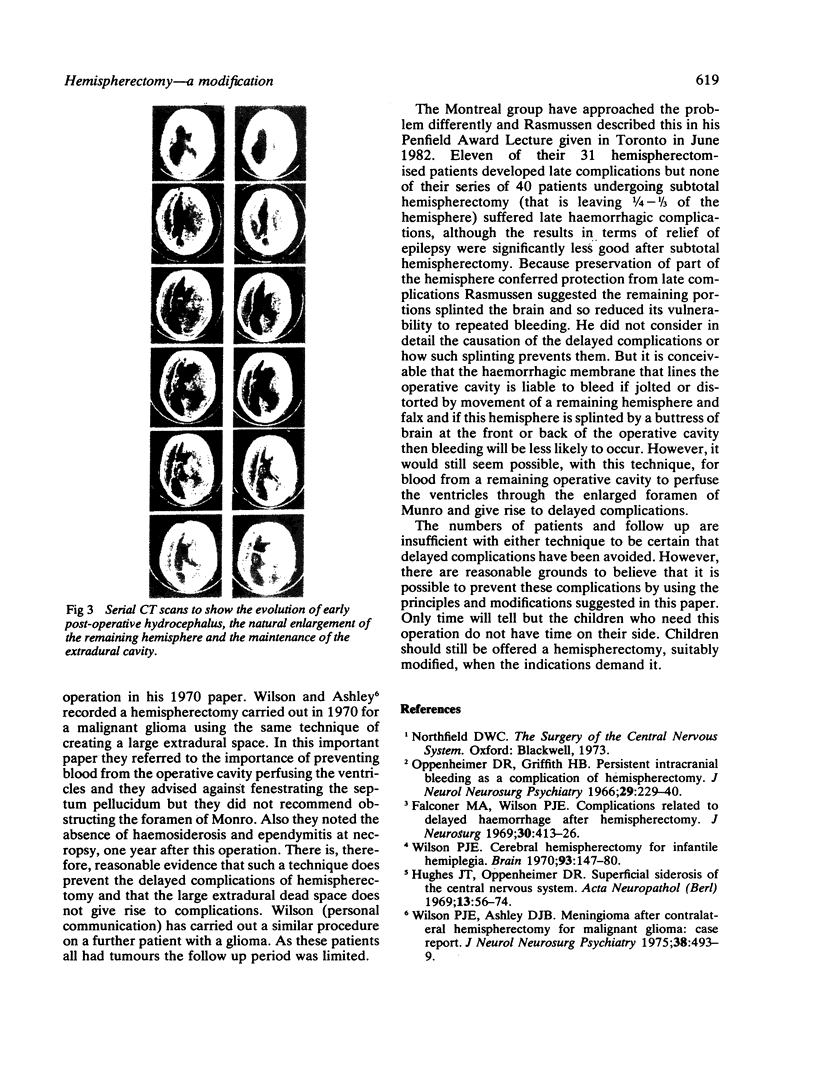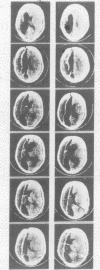Abstract
Hemispherectomy is probably the best operation for treating epilepsy. It was abandoned because of the delayed haemorrhagic complications that developed some years after the operation. A hypothesis is described to account for the mechanism of such complications and modifications made to the operative technique to prevent such complications. This modified hemispherectomy has been carried out on four patients since 1980.
Full text
PDF


Images in this article
Selected References
These references are in PubMed. This may not be the complete list of references from this article.
- Falconer M. A., Wilson P. J. Complications related to delayed hemorrhage after hemispherectomy. J Neurosurg. 1969 Apr;30(4):413–426. doi: 10.3171/jns.1969.30.4.0413. [DOI] [PubMed] [Google Scholar]
- Hughes J. T., Oppenheimer D. R. Superficial siderosis of the central nervous system. A report on nine cases with autopsy. Acta Neuropathol. 1969;13(1):56–74. doi: 10.1007/BF00686141. [DOI] [PubMed] [Google Scholar]
- Oppenheimer D. R., Griffith H. B. Persistent intracranial bleeding as a complication of hemispherectomy. J Neurol Neurosurg Psychiatry. 1966 Jun;29(3):229–240. doi: 10.1136/jnnp.29.3.229. [DOI] [PMC free article] [PubMed] [Google Scholar]
- Wilson P. J., Ashley D. J. Meningioma after contralateral hemispherectomy for malignant glioma: case report. J Neurol Neurosurg Psychiatry. 1975 May;38(5):493–499. doi: 10.1136/jnnp.38.5.493. [DOI] [PMC free article] [PubMed] [Google Scholar]
- Wilson P. J. Cerebral hemispherectomy for infantile hemiplegia. A report of 50 cases. Brain. 1970;93(1):147–180. doi: 10.1093/brain/93.1.147. [DOI] [PubMed] [Google Scholar]




